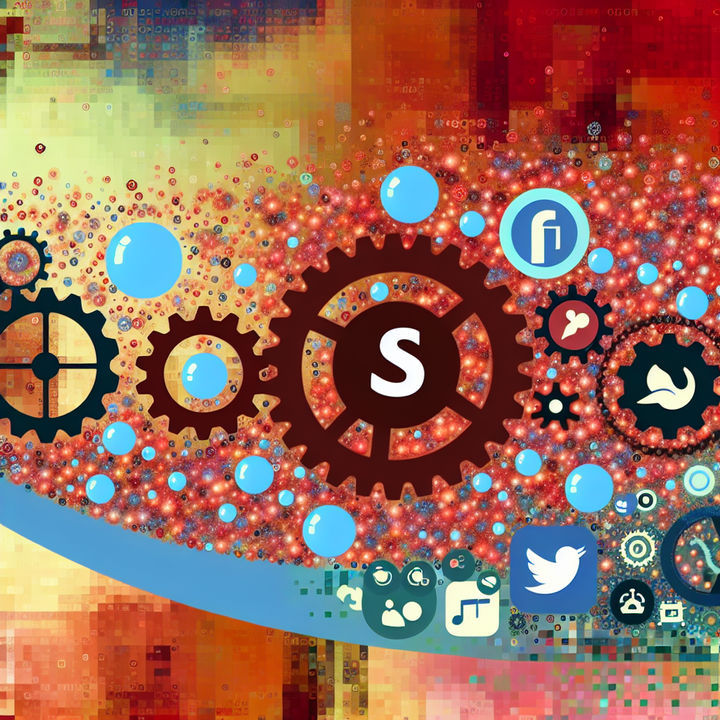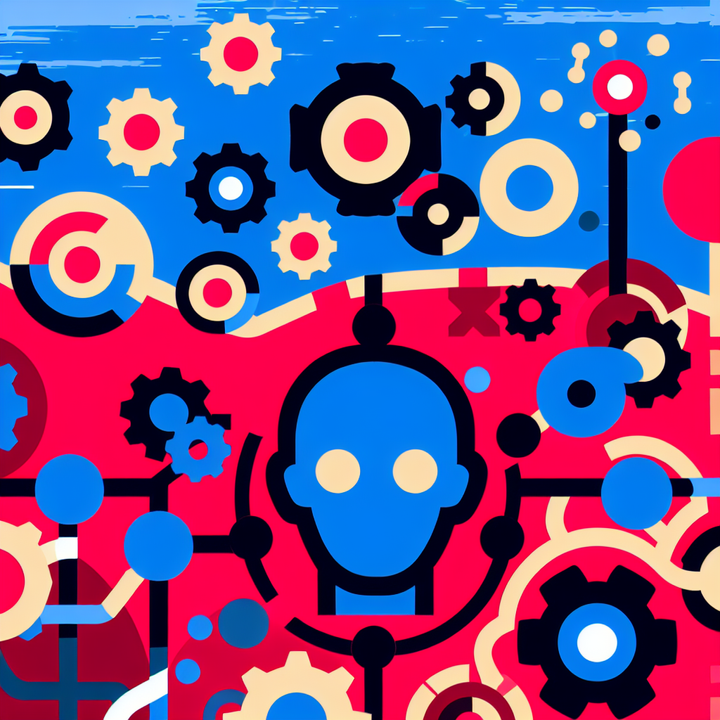Maximizing Engagement Through Social Media Automation

Understanding Social Media Automation
Social media automation refers to the use of software tools and technologies to streamline, optimize, and schedule tasks related to social media activities. These tasks can range from scheduling posts to tracking analytics and automating interactions with followers. This approach allows businesses to enhance their social media engagement effectively and efficiently.
Automation tools function through various features, including:
- Scheduling Posts: Plan and schedule content ahead of time, ensuring a consistent flow of posts.
- Tracking Analytics: Monitor key metrics such as engagement rates, follower growth, and website traffic.
- Automating Interactions: Automatically respond to comments, messages, and mentions, providing timely customer service.
By leveraging social media automation, businesses can maintain a robust online presence without dedicating extensive resources to manual management.
Benefits of Social Media Automation for Businesses
Social media automation offers numerous advantages, particularly for busy business owners, marketing managers, content strategists, and startup founders. These benefits include:
- Time-Saving: Automating repetitive tasks frees up valuable time for more strategic activities.
- Improved Consistency: Scheduling posts ensures a steady stream of content, maintaining audience engagement.
- Enhanced Targeting: Use advanced algorithms to target specific demographics effectively.
- Personalized Interactions: Automatically personalize responses, improving customer satisfaction.
By implementing social media automation, businesses can focus on what they do best while maximizing engagement and reach on their social media platforms.
Choosing the Right Social Media Automation Tools
Selecting the appropriate social media automation tools is crucial for achieving desired outcomes. Here are some criteria to consider:
| Criterion | Description |
|---|---|
| Business Size | Choose tools that scale with your business needs, whether you’re a startup or an established enterprise. |
| Target Audience | Select tools that allow you to reach and engage your specific target demographics effectively. |
| Functionalities | Ensure the tool offers the features you require, such as post scheduling, analytics, and interaction automation. |
Several tools in the market can meet these needs, including Hootsuite, Buffer, and Sprout Social. Each offers unique features tailored to different business requirements.
Setting Up Your Social Media Automation Strategy
Creating a robust social media automation strategy involves several key steps:
- Define Goals: Establish clear objectives, such as increasing brand awareness, driving website traffic, or boosting engagement.
- Identify Target Audiences: Understand who your audience is and tailor your content to meet their interests and needs.
- Select Content Types: Determine the types of content that resonate with your audience, such as blogs, videos, or infographics.
- Set Up a Content Calendar: Plan your content schedule in advance to ensure a consistent posting routine.
By following these steps, you can create a cohesive strategy that maximizes the benefits of social media automation.
Creating Engaging Content Through Automation
Automation tools can help in developing engaging and high-quality content while maintaining consistency and brand voice. Here are some tips:
- Use AI Writing Assistants: Tools like Taleflow can help generate SEO-optimized content tailored to your brand and industry.
- Leverage Analytics: Use data insights to understand what content performs best and adjust your strategy accordingly.
- Maintain Brand Voice: Ensure automated content aligns with your brand's tone and style by setting clear guidelines for content creation.
By integrating these practices, businesses can produce content that engages customers and drives interaction.
Simplifying Engagement With Automated Responses
Automated responses can significantly simplify customer interactions and enhance customer satisfaction. Successful strategies include:
- Quick Replies: Set up predefined responses to common questions to provide prompt customer service.
- Chatbots: Implement AI-powered chatbots that can handle inquiries 24/7, ensuring constant availability.
- Interactive Content: Use polls, quizzes, and other interactive posts to engage customers and gather feedback.
By employing automated responses, businesses can manage customer interactions more effectively and efficiently.
Integrating Social Media Automation With Your Overall Marketing Plan
For maximum impact, it’s essential to integrate social media automation into your broader marketing strategy. Here’s how:
- Email Marketing: Sync your social media campaigns with email newsletters to ensure consistent messaging and extended reach.
- SEO Strategies: Use social media automation to promote SEO-optimized content, driving traffic to your website.
- Content Marketing Goals: Align automated content with your overall content strategy to reinforce your brand’s message and objectives.
Integrating automation with other marketing efforts ensures a cohesive and comprehensive approach.
Measuring the Success of Your Social Media Automation
Tracking the effectiveness of your social media automation is crucial for continuous improvement. Key metrics to monitor include:
- Engagement Rates: Measure likes, shares, comments, and interactions to gauge audience engagement.
- Follower Growth: Track the increase in followers to assess the impact of your automated efforts.
- Website Traffic: Monitor referral traffic from social media to your website.
- Conversion Rates: Evaluate the number of leads or sales generated from social media activities.
Tools like Google Analytics and social media platforms’ native analytics can provide detailed insights into these metrics.
Case Studies: Success Stories of Social Media Automation
Real-life examples can provide valuable insights into the effectiveness of social media automation. Here are a few success stories:
- Company X: Faced with resource constraints, Company X implemented social media automation to schedule posts and track analytics. As a result, they saw a 30% increase in engagement and a 20% increase in website traffic.
- Startup Y: Leveraging automated responses and chatbots, Startup Y managed to provide round-the-clock customer support, leading to a 25% increase in customer satisfaction ratings.
These examples demonstrate the tangible benefits that businesses can achieve through effective social media automation.
Top Tips for Maximizing Engagement with Social Media Automation
To maximize engagement using social media automation, consider the following tips:
- Personalize Content: Use automation tools to tailor content to different audience segments.
- Utilize Advanced Scheduling: Schedule posts at optimal times when your audience is most active.
- Monitor and Adjust: Continuously track performance and tweak your strategy based on data insights.
- Engage with Interactive Content: Implement polls, contests, and Q&A sessions to boost interaction.
By following these best practices, businesses can enhance their social media presence and engage customers more effectively.
Future Trends in Social Media Automation
The landscape of social media automation is continually evolving, with numerous emerging trends and technologies. Here’s a glimpse into the future:
- AI and Machine Learning: Advanced AI algorithms will offer deeper insights and more personalized content recommendations.
- Increased Interactivity: Tools enabling more interactive and immersive content, such as AR and VR, will become mainstream.
- Integration with Other Platforms: Automation tools will offer better integration with other marketing and sales platforms, creating a seamless workflow.
By staying ahead of these trends, businesses can leverage the latest technologies to enhance their social media automation efforts and maximize engagement.



